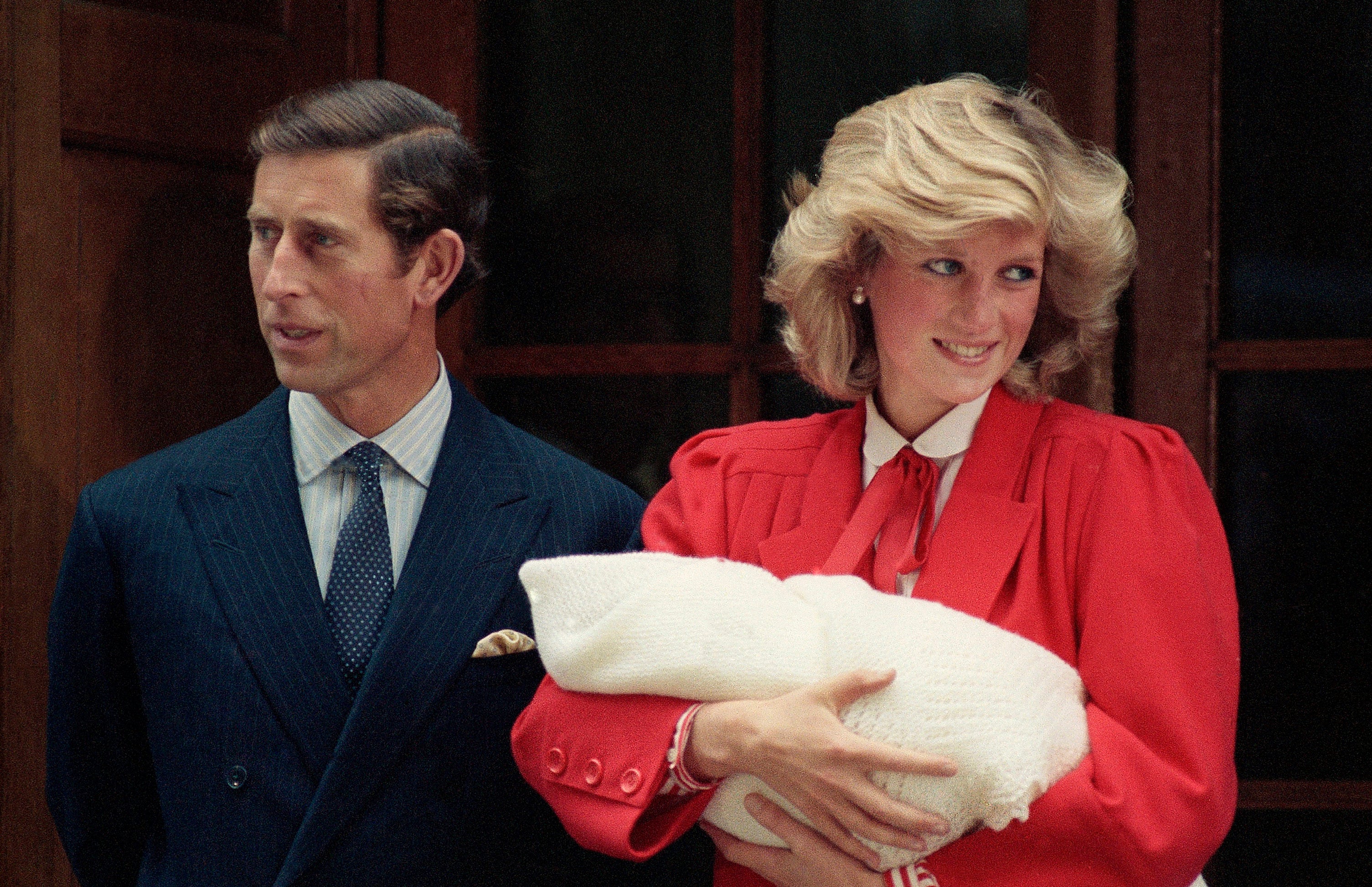The royal family needs women more than anything — so why does it hate them so much?
On the 25th anniversary of Princess Diana’s death, let’s not forget the misogyny that started with an obsession about what she did on the Royal Train


Your support helps us to tell the story
From reproductive rights to climate change to Big Tech, The Independent is on the ground when the story is developing. Whether it's investigating the financials of Elon Musk's pro-Trump PAC or producing our latest documentary, 'The A Word', which shines a light on the American women fighting for reproductive rights, we know how important it is to parse out the facts from the messaging.
At such a critical moment in US history, we need reporters on the ground. Your donation allows us to keep sending journalists to speak to both sides of the story.
The Independent is trusted by Americans across the entire political spectrum. And unlike many other quality news outlets, we choose not to lock Americans out of our reporting and analysis with paywalls. We believe quality journalism should be available to everyone, paid for by those who can afford it.
Your support makes all the difference.Diana Spencer, her uncle told the world the year before her wedding to Prince Charles, had “never had a lover.” Why did we need to know? Well, as the uncle himself told the Daily Star at the time, “purity [seemed] to be at a premium when it [came] to discussing a possible bride” for Charles. “And after one or two of his most recent girlfriends I am not surprised,” the uncle – our good Lord Fermoy, who was apparently feeling chatty that day – added.
This was but the beginning of the public discourse regarding Diana’s virginity. A few days later, the Sunday Mirror ran a report alleging that Diana had met up with Charles (the man she had not yet married) at night aboard the Royal Train. “This was the future Queen they were suggesting was being smuggled in and out of the Royal Train for a naughty romp,” Tina Brown wrote in her 2007 book The Diana Chronicles.
The palace got involved. The Queen’s press secretary wrote to the newspaper asking for an apology “in a prominent position, at the earliest possible opportunity.” The fact that that detail isn’t all that surprising – of course the Queen’s press secretary got involved, of course the Queen took a personal interest in the mythology surrounding Diana’s virginity – reveals how accustomed we’ve become to the idea that personal boundaries work… differently, shall we say, in the royal family.
“Was it really necessary for the notion of [Diana’s] chastity to be Saran-Wrapped to the bitter end?” Brown muses in her book. The answer is an obvious no. Of course, the royals weren’t the only ones being extremely weird about the notion of virginity around that time. The discourse continued in that direction well into the late 1990s and early 2000s, at which point things began to change, slowly and imperfectly.
But there is something uniquely royal about this anecdote, which makes it worth revisiting as the British monarchy undergoes a seemingly never-ending public image crisis. “The compulsion to defend Diana’s maidenhood was most likely impelled by the politics of privilege,” Brown wrote, pointing out that the Royal Train is – like most luxuries enjoyed by the royals – financed by taxpayer money. “... [Charles] knew that the last thing the Palace needed on the eve of a royal engagement was a row about the abuse of publicly funded luxuries.”
There is a fatal flaw at the heart of the British monarchy as we have come to conceive of it: you can remain royals (and enjoy a lavish lifestyle), as long as you become public property. Your life won’t belong to you. Your body won’t either. There will be scarcely an expectation of privacy. It’s a bad deal for both sides. And it plays out in an especially toxic way for women, in a very Ariel-giving-up-her-voice-so-she-can-grow-feet-and-marry-Prince-Eric kind of way.
Yet, the royal family needs women. Not just because they occasionally sit at the top of its hierarchy, but also for PR. When you read about the royal family in a magazine or in a newspaper, you will read about its women. They usually wear the more interesting outfits – the ones worthy of being photographed from multiple angles and dissected by keen-eyed commentators. They give birth to children and emerge from the maternity ward, sometimes just hours after labor, to present the latest baby to the world. There is always something to say about women. They are mothers dealing with their unruly children. They are girlfriends who may or may not become wives.
If they do become wives, there’s even more to talk about. The woman in question has to get ready for her new life as a royal and familiarize herself with regal minutiae (“According to protocol, if William is not present Kate is expected to curtsy to all senior members of the family, including blood princesses Beatrice and Eugenie, and she is always expected to curtsy to Camilla and the Prince of Wales,” reads a 2012 Vanity Fair write-up of Kate’s first year as a royal. “While the antiquated guidelines are not always adhered to, the Queen believes they are fundamental to the underpinning of the family, and Kate always ensures that she curtsies to the Queen and the Duke of Edinburgh. Apparently in private she is close enough to Camilla that there is no need to curtsy, nor does she defer to William’s cousins unless it is required at a formal occasion, according to one family member.”)
Compare this to the treatment of men. Sure, there might be an article here or there about Prince Harry’s outfits, or an explainer or two about why he and William were educated at Eton when their father attended Gordonstoun. But it’s nothing compared to the breathless attention commanded by the ladies of the royal family, from the Queen herself to Kate and Meghan.
And yet, for an institution so dependent on women, the monarchy has also failed them the most consistently. It is in essence a sexist institution – it wasn’t until 2013 (just before the birth of Prince George, Kate and William’s first child) that the rules of succession were changed to remove male-preference primogeniture and institute absolute primogeniture in its place. In other words, the rules of succession changed to favor the eldest child, rather than the eldest son. (So if a girl is the eldest, she will become a ruling monarch, even if her parents go on to have sons. Previously, if a girl was born and then a boy, she would be leapfrogged and become second in line to the throne once her brother made an appearance.)
I can’t help but notice, too, that a Queen Consort is the wife of a king, but the husband of a reigning queen is typically not known as a King Consort. Per Hello, “the title King Consort is very rarely used, and this is because most monarchies do not have formal rules on the styling of the husband of a female monarch” – almost as if most monarchies did not develop a vocabulary for this particular situation, because it never arose. (France, where I’m from, never had a ruling queen.)
And then there’s the other stuff – little things that add up to a lot. The recording which emerged in 2017, in which Diana said that after she confronted Charles about his infidelity, he told her: “Well, I refuse to be the only Prince of Wales who never had a mistress.” The expectation that a woman not only present her new baby to the world right after giving birth, but do so in full hair and makeup. The psychosexual weirdness of David Cameron claiming the Queen “purred down the line” in 2014, after he told her that Scotland had voted to remain in the UK. The idea that a prince’s wife must twist herself into a million directions to support him, to elevate him, to protect his family, as if women were coal to be consumed by this particular royal furnace.
And the misogyny isn’t only coming from inside the house. To be accounted for is the sexism women face from the outside whenever they associate with the royal family. Kate Middleton (now beloved by royal fans) was once given the nickname “Waity Katie” – a rude, dismissive reference to the fact that Kate and William dated for eight years before tying the knot. Three years before their wedding, the Daily Mail claimed Kate and her sister Pippa had been nicknamed “the wisteria sisters” because they were “highly decorative, terribly fragrant, and with a ferocious ability to climb.” The fact that Charles and Camilla’s affair was framed so often as a “Camilla vs Diana” problem (by way of comparisons between the two) rather than a “the future king is cheating on his wife” problem. The fact that when Harry and Meghan decided they’d rather not live the rest of their lives as royals, the move became known as “Megxit” – putting the responsibility and the attention on the wife, rather than the fully grown man who had made the decision with her and who originated within the family himself.
The monarchy has the power to intervene when things start to go awry, as proven by the Queen’s press secretary’s demand for an apology over those Royal Train claims 42 years ago. So when it doesn’t – or when it does too little, too late – it reads as a choice, more than as neutral inaction.
“The British monarchy is a more than one-thousand-year-old institution with a ninety-six-year-old CEO and a septuagenarian waiting in the wings,” Tina Brown wrote in her new and most recent book, The Palace Papers. “It cannot be expected to be nimble.” Be that as it may (and Brown is not wrong here), it is also an institution that lives on public relations, and therefore on relevance. If it’s going to be here at all, then it needs to evolve. Giving the ladies it so essentially needs a fair shake might be the best place to start.
Join our commenting forum
Join thought-provoking conversations, follow other Independent readers and see their replies
Comments